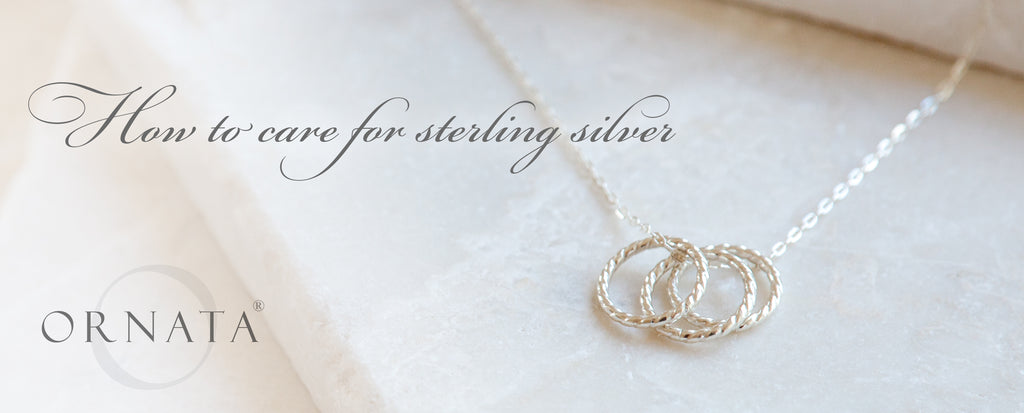
Silver is one of the world’s most treasured commodities. Sterling silver inspires a level of trust and stands the test of time with regard to quality, appeal, and beauty.
Ornata specializes in silver jewelry and offers both sterling silver and silver plated lines. The silver plated line features either fine silver or sterling silver plated over pewter, brass, or steel. We love silver because it reacts with its surroundings to bring out a warm luster over time. While this property of silver gives it life and character, it can also lead to tarnishing, which may be less desirable.
Here is a bit of background to better understand the scientific process: [from Wikipedia]
Sterling silver is an alloy of silver containing 92.5% by mass of silver and 7.5% by mass of other metals, usually copper. The sterling silver standard has a minimum millesimal fineness of 925.
Fine silver, for example 99.9% pure silver, is generally too soft for producing functional objects; therefore, the silver is usually alloyed with copper to give it strength while preserving the ductility and appearance of the precious metal.
Chemically, silver is not very reactive—it does not react with oxygen or water at ordinary temperatures, so does not easily form a silver oxide. However, it is attacked by common components of atmospheric pollution: silver sulfide slowly appears as a black tarnish during exposure to airborne compounds of sulfur (byproducts of the burning of fossil fuels and some industrial processes), and low level ozone reacts to form silver oxide. As the purity of the silver decreases, the problem of corrosion or tarnishing increases because other metals in the alloy, usually copper, may react with oxygen in the air.
So, whether or not your silver tarnishes is based on both the environment and the type of silver you have. We’ve lived in places where our silver would turn dark almost immediately if it came into contact with well water (which had a high sulfur content). We’ve also lived in places where we’ve never had to clean our sterling silver jewelry— even after years of wearing and storing it.
Here’s what we’ve found to be the best practices:
1) Store silver in small plastic bags with as little air as possible.
2) Avoid having silver come into contact with reactive agents, such as sulfur. Surprisingly, many decorative storage boxes, especially inexpensive and imported ones, contain chemicals that will turn silver black in a very short period of time— we learned this the hard way! Similarly, various creams, lotions, and fragrances may adversely affect the appearance of silver.

3) Use a soft polishing cloth to bring up the shine. Be careful not to over polish silver plated jewelry as doing so will wear down the layer of silver and expose the underlying metal.
There are a lot of homemade solutions to clean silver as well. One of the most universally accepted methods uses one tablespoon each of dishwashing detergent, baking soda, and salt in a cup of hot water with aluminum foil lining the container.
Here’s a cleaning solution “recipe" to whip up from Food.com. This DIY comes complete with an ingredients list, easy to follow directions, and pictures.
We thought we’d give it a try since it looked too good to be true.
But...

“Antiqued” Silver Plated Pieces (with untarnished reference comparison)

Sterling Silver Chains (with untarnished reference comparison)

DON’T skip the aluminum foil, though! The aluminum moves the silver oxidation from the silver to the foil. You need to lay the sterling on aluminum foil or it will turn black.
Also exercise caution with silver plated objects— especially if you don’t know what other metals are in the piece. Similarly, a gentle polishing cloth may be your safest bet with some silver pieces.
Lastly, sterling silver or plated silver with an ANTIQUED FINISH or LACQUER may behave differently than expected depending upon the technique used to achieve the vintage look.
We hope you found this post useful. You can see several variations of this technique and other tips on our Pinterest Board.
Enjoy life with your silver!
